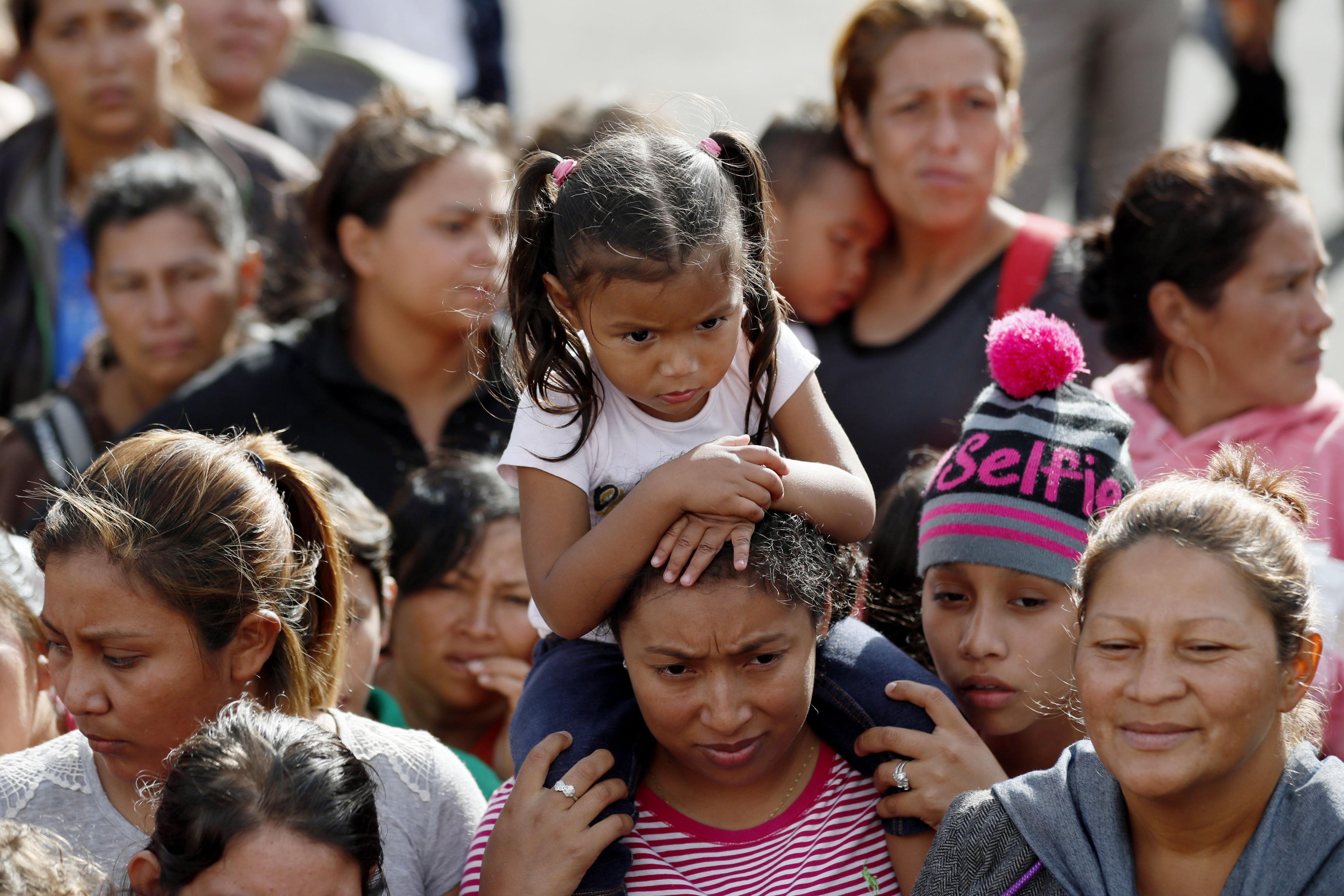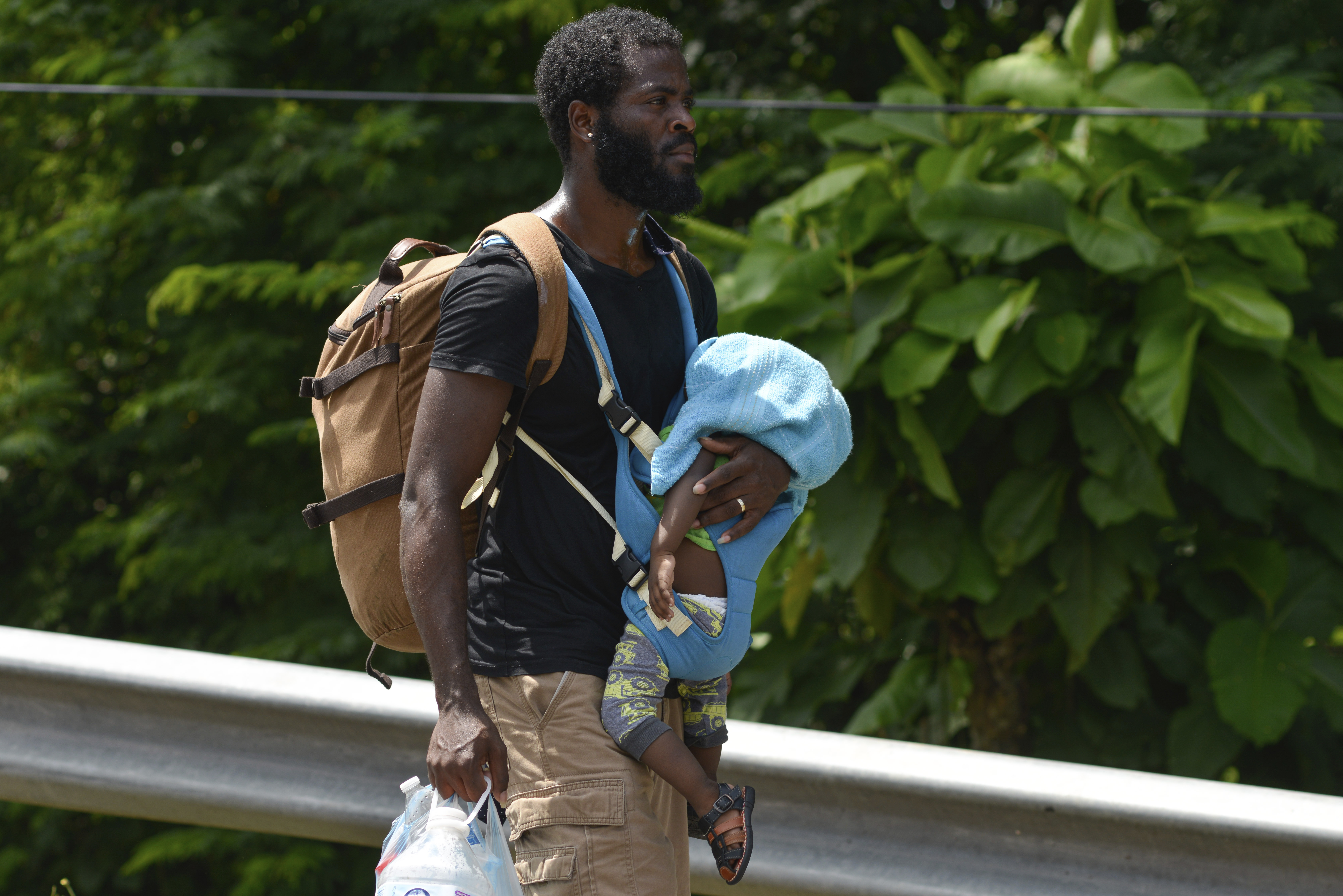The Complicated Legacy of the Migrant Caravan
Credit to Author: Emily Green| Date: Thu, 17 Oct 2019 22:27:41 +0000
MEXICO CITY — Beatriz Rosa Ramos wakes up every morning and takes a run before heading to a local high school in Santa Monica, California, where she studies English. It’s a simple routine she’s come to cherish, and a far cry from where she was just a year ago, when she walked for miles in 100-degree heat and slept in public plazas with more than 7,000 other Central American migrants trying to reach the U.S.
For Ramos, a Guatemalan seeking asylum on the grounds that she was persecuted in her home country for being gay, the caravan that captured the world’s attention last fall was her first and last option: She remembers telling the agents after being detained at the border, “If they wanted to hold me the whole year, they could. But I wasn’t going back.”
Yet for most of the migrants who came after it, the caravan has come to signal the beginning of the end for the U.S. asylum process. Ultimately, the caravan played into the hands of President Donald Trump, who used the image of thousands of migrants headed to the border en masse to rally his base during the 2018 midterms and stoke fear that the country was being “invaded.” He characterized the group as an “assault on the sovereignty of our country,” and deployed troops to the U.S.-Mexico border ostensibly to keep them out. The caravan became his justification for imposing increasingly restrictive, hard-line policies that have made it nearly impossible for most asylum-seekers to gain entry into the U.S. since.
“The caravan opened the floodgates for migration from Central America, but it also generated the backlash that then closed those gates,” said Andrew Selee, president of the Migration Policy Institute in D.C. “It gave Trump the ammunition he needed to carry out a series of measures to make it harder to get across the border and get asylum.”
The now infamous movement also had knock-on effects in Central America, as Trump’s repeated threats to close the border created a lucrative marketing tool for smugglers. Business boomed as smugglers encouraged migrants to make the journey while they could and get into the U.S. before the border closed.
“It created the opportunity for Trump to adopt a much harsher rhetoric and strategy”
Daniel, a smuggler in Guatemala who helps transport migrants to the U.S., said the intense focus on the caravan was good for business: Mexican police and immigration officials were so busy monitoring the caravan that it became easier for the smugglers to travel across Mexico undetected.
“It left blind spots open so we could pass easily,” said Daniel, who asked us to withhold his real name because of his line of work.

One of the clearest impacts of the migrant surge is Mexico’s new immigration stance. Under threat of crippling tariffs from the U.S., Mexico deployed around 25,000 members of its newly formed National Guard military force to stop migrants — instead of going after organized crime and cartels.
“If it hadn’t been for the caravans, Mexico would have had more margin to say this is insane and there is no crisis at the border,” said Carlos Bravo Regidor, a political analyst in Mexico City. “It created the opportunity for Trump to adopt a much harsher rhetoric and strategy.”
In December, shortly after thousands of migrants in the caravan reached Tijuana, Trump announced what has since become one of the administration’s most effective tools for turning back migrants: a policy requiring asylum-seekers — including families — to wait in Mexico for up to a year while their cases are decided.
“The caravans didn’t lead to these policy changes, but they did help fire up support for it”
Daniel, the smuggler, said he hasn’t taken a trip since July because it’s too difficult to traverse Mexico without getting stopped. His customers have also changed: It used to be families seeking asylum in the U.S., but now the few migrants still traveling these days are single adults trying to cross into the U.S. illegally.
In Southern Mexico, thousands of migrants hoping to reach the U.S. legally are stranded. In a sign of despair, hundreds of people from Africa, the Caribbean, and Central America made an attempt to begin walking to the U.S. earlier this month, following the journey of the migrant caravan exactly one year before.
After they walked some 20 miles north, Mexico’s National Guard agents and police surrounded them and impeded their journey. This time, they landed in a detention center and are now awaiting deportation.

Others argue Trump would have taken this hard-line approach against migrants regardless of the caravan. Even before it became the focus of his attention, Trump had initiated his ill-fated family separation policy and vastly expanded a metering system that caps the number of people who can request asylum at border crossings.
“He used the caravan as justification for the policies that he wasn’t shy about,” said Democratic Rep. Nanette Barragán of California. “He was already pushing anti-immigrant rhetoric and policies from the moment he took office.”
“The caravans didn’t lead to these policy changes, but they did help fire up support for it,” said Aaron Reichlin-Melnick, a policy analyst at the American Immigration Council.
Despite the intense media attention on the group, the number of people in the caravan was a fraction of the overall number of migrants actually reaching the border.
At its height, the caravan had around 8,000 people. By contrast, U.S. immigration officials apprehended 60,785 migrants at the southwest border in October 2018, the same month the caravan set out. By March of this year, the number of migrants apprehended at the border exploded to more than 100,000 — most of them Central American families asking for asylum.
But the caravan stood out because it marked the first time such a mass group of migrants were seen — and demanded to be seen — headed to the U.S. There had been earlier caravans, but none rivaled the size of the one that reached Tijuana last November. And those walking with it were proud, defiant, and determined. Even the prospect of soldiers waiting for them didn’t scare them off.
“The caravan saved lives. It permitted a lot of people to flee the country”
“They defied the image of immigrants as victims. They were reclaiming their rights and using their bodies not only to migrate but to demonstrate and protest,” said Bravo Regidor, adding that those who followed paid the price. “They have been hunted ever since,” he said.
But one of the main advocates of the caravan says he has no regrets, and he dismissed suggestions that it inspired a backlash that made it harder in the long run for migrants to reach the U.S.
“I feel satisfied,” said Bartolo Fuentes, a former Honduran lawmaker who helped promote the caravan. “The caravan saved lives. It permitted a lot of people to flee the country.”
It’s unknown how many people from the caravan reached the U.S. But Selee, with the Migration Policy Institute, estimates that the majority of people who reached Tijuana eventually crossed into the U.S. Testimonials from many of those migrants indicate that single men were held in detention for several months and then deported, while families traveling with children were allowed in.
For Mayra Aguilar, who joined the caravan with her two daughters after her husband was murdered by gang members in Honduras, the caravan was a godsend. They crossed into the U.S. on December 23 and were released after a few days in detention. They are now living in Lexington, Kentucky, and seeking asylum. Aguilar works in the meat section of a local supermarket. Her youngest daughter attends 7th grade.
The caravan “was a great adventure,” Aguilar said. “My daughters had this experience and they are going to be talking about it to their kids, and grandchildren, and great-grandchildren one day. Never have we seen so many people migrate at the same time.”
Cover: "No cages, no wall" is written on the posters of demonstrators protesting against US migration policy on the border between Mexico and the USA. (Photo by: Omar Mart'nez/picture-alliance/dpa/AP Images)
This article originally appeared on VICE US.